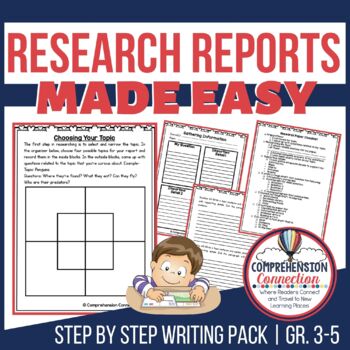As students work through the process, other reading skills are included such as main idea/details, text features, determining importance, and fact and opinion. As writers, students learn how paragraphs are organized with a topic sentence, supporting detail sentences, and a closing, and how paragraphs come together to explain in depth. So how can we make all of this easier for kids?
The first step in researching is to make the assignment clear and share why researching is important. Kids need to know exactly what is expected right from the beginning, so using anchor charts to outline what they will be doing and the steps involved, modeling how to get started, and what information students will be looking for breaks the assignment down into chewable bites.
Next, list the information sources they are expected to learn to use and demonstrate how to use them. Kids need to know how to use key words and which resources match the needs they have. Will the internet be used? Are kids allowed to search on Google? It's important that the kids know the rules in order to avoid breaking them.
Once the kids have the gameplan, they are ready to dig in, or are they? Well, you probably should model with anchor papers what is expected and demonstrate with a class paper how to conduct research. Outline the steps in a checklist to keep your kids organized and provide due dates for each section. As you ask the kids to do a step, model with the anchor paper how to do it.
As students work through the process, keeping them on task and working toward completion can be a problem. You can avoid that by having them use self evaluations to monitor their own progress. Collect and give feedback on the pieces of working leading up to the final project. If the kids have a rubric to follow, it will help them know how they will be graded.
If you have struggling students, you may find assigning the same topic to a group helpful. Then, you can pull them into a small group for guidance versus spreading yourself thin trying to reach and help them all. I'd suggest preselecting resources as a way to get students started, and you may also want to enlist the help of teaching assistants and/or your school librarian. If you want students to use the internet, you can use QR codes to ensure that your students get to the correct location on the web.
Well, I hope these tips help you the next time you're scratching your head and trying to figure out how to get your kids to the final draft. To help you out, I put together this step-by-step freebie that you can use with any topic. Enjoy!
Happy Researching and see you next month!













No comments